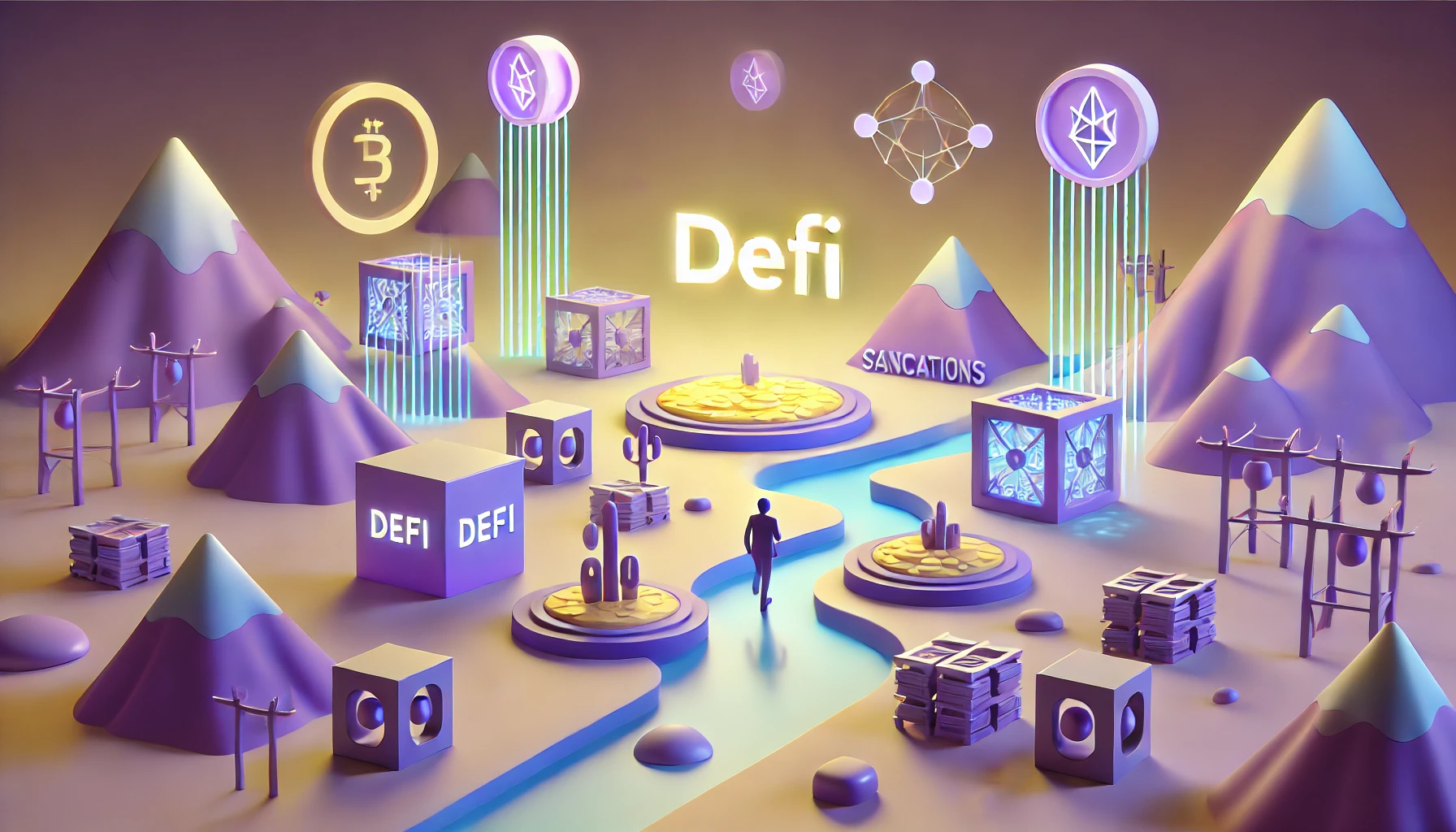Introduction
Vesting is a central concept in the field of blockchain and cryptocurrencies. The term refers to a mechanism for locking and gradually releasing digital assets, often in the form of tokens or shares in a project. It plays a crucial role in managing long-term incentives and ownership. In corporate contexts, it also applies to shares awarded to employees and founders.
Why is vesting important?
In crypto projects, vesting ensures a fair distribution of resources and incentivizes participants to remain involved for the long term. By imposing a lock-up period, this mechanism reduces the risk of massive dumping in the markets, which can protect the price stability of the assets concerned.
Vesting is also used in traditional startups to retain employees by offering them shares or options that unlock over time. This approach encourages contributors to remain involved in the long-term success of the company or project.
An essential tool for blockchain projects
In the cryptocurrency world, vesting is used to align the interests of investors, founders, and development teams. For example, when a project team decides to reserve a share of tokens, they can lock them up for a certain period of time, thus avoiding conflicts of interest. This mechanism also protects the project’s credibility and strengthens investor confidence.
vesting mechanisms
vesting process can take different forms, including:
- Linear vesting : Assets are released gradually at regular intervals.
- Cliff vesting : An initial period where no assets are released, followed by a partial or full release.
- Conditional vesting : Assets are only released if certain conditions are met, such as performance or length of participation.
These different options allow projects to adapt to their specific objectives and stakeholder expectations.
In summary, vesting is a pillar of resource management and incentives in blockchain ecosystems and startups. It contributes to market stability, talent retention, and the growth of innovative projects.
Definition and principles of vesting
Vesting , or acquisition mechanism, is a process for managing the gradual release of assets such as tokens or shares over a set period of time. This concept, widely used in businesses and blockchain projects, ensures a fair distribution of resources while aligning the interests of stakeholders over the long term.
What is vesting ?
Vesting is based on the idea that beneficiaries do not immediately receive all of the assets allocated to them. Instead, these assets are released gradually or at the end of a lock-up period called the vesting period . This mechanism aims to prevent opportunistic behavior, such as immediately reselling assets for a quick profit.
Example :
- A company awards 1,000 tokens to an employee as part of a 4-year vesting program.
- Each year, the employee can unlock 25% of their tokens, or 250 tokens per year.
The basic principles of vesting
- Vesting period :
- The period of time assets remain locked up before being fully released. This can vary from a few months to several years, depending on the project.
- Cliff vesting :
- An initial period where no assets are released. After this period, a percentage of the assets are released at once.
- vesting :
- Assets are released at regular intervals, such as monthly or quarterly. This model is often used to ensure a balanced distribution.
- vesting :
- Assets are only released if certain predefined conditions are met, such as achieving financial goals or remaining committed to a project.
Why is vesting important?
Vesting plays an essential role in the governance and sustainability of projects :
- Avoid conflicts of interest: Blocked assets prevent founders or employees from immediately selling their shares, thus enhancing price stability.
- Loyalty: By linking assets to a period of commitment, vesting encourages employees and investors to support a project over the long term.
- Strengthening credibility: Vesting mechanisms ensure investors transparent and sustainable management of resources.
vesting types
| Type of vesting | Description | Example |
| Cliff vesting | No assets released before a defined period, then partial or full release. | Release of 50% of tokens after 1 year, the remainder in 6 months. |
| Linear vesting | Regular release of assets over a given period. | 25% of assets released each year for 4 years. |
| Conditional vesting | Release of assets subject to meeting specific conditions. | Tokens are released if the project reaches a certain revenue. |
Vesting is a cornerstone for ensuring prudent resource management in crypto projects and startups. It helps balance the interests of founders, employees, and investors.
The different types of vesting
Vesting offers several asset release mechanisms, each tailored to specific needs. These approaches balance long-term commitment with flexibility in resource management. Here’s a detailed look at the most common types of vesting .
Cliff vesting
The cliff Vesting imposes an initial period during which no assets are released. After this period, a predetermined percentage of the assets is released at once.
Main features:
- Fixed period: The initial lock-up period generally varies from 6 months to 2 years.
- Single Release: At the end of the cliff , a portion of the assets becomes immediately available, often 20% to 50%.
Benefits :
- Protects projects against early employee departures.
- Encourages a minimum commitment before any access to assets.
Concrete example:
An employee receives 1,200 tokens as part of a cliff One-year vesting . At the end of this first year, he unlocks 300 tokens, then receives 75 tokens each month for 12 months.
Linear vesting
Linear vesting is based on a regular release of assets, spread over a defined period.
Main features:
- Constant Release: Assets are released in equal shares, usually monthly or quarterly.
- Transparency: Beneficiaries know precisely how many assets they will receive and when.
Benefits :
- Simple and easy to understand.
- Encourages consistent, long-term commitment.
Concrete example:
An investor receives 1,200 tokens with a linear vesting period of 24 months. Each month, they unlock 50 tokens.
Conditional vesting
In conditional vesting , assets are released only if certain specific conditions are met. These criteria can be related to performance, project goals, or deadlines.
Main features:
- Performance-based: Recipients must achieve specific goals.
- Flexibility: This model adapts to the specific needs of projects.
Benefits :
- Encourages concrete and measurable results.
- Reduces risks for investors and businesses.
Concrete example:
Employees of a startup receive tokens on the condition that the company reaches 1 million active users or generates revenue exceeding 5 million euros.
Comparative table of vesting types
| Type of vesting | Principles | Benefits | Example |
| Cliff vesting | Initial lock-up period followed by partial or full release. | Protects projects from early departures. | 50% of assets released after 1 year, then the remainder in installments. |
| Linear vesting | Regular release over a defined period. | Simple, encourages constant engagement. | 50 tokens released each month for 24 months. |
| Conditional vesting | Release based on specific objectives. | Encourages measurable results. | Asset release if the project reaches 1 million users. |
The advantages and limitations of vesting
Vesting is a strategic mechanism that offers undeniable advantages, but also limitations that must be considered. This section explores these aspects in detail to assess its impact on beneficiaries and projects .
The advantages of vesting
Securing projects
Vesting allows companies, startups, and blockchain projects to protect their assets. By delaying the release of tokens or other rewards, it reduces the risk of premature termination or employee departure .
Example: A startup prevents its employees from immediately selling their shares by using a 12- month cliff vesting .
Team and investor loyalty
This mechanism ensures that employees and investors remain engaged over the long term. Vesting encourages a relationship of trust between all parties.
Key points:
- Creates alignment of goals between employees and the company.
- Reduces the risk of instability within teams.
Adaptability to specific needs
Vesting can be modified based on objectives: performance, duration, or milestones . This flexibility allows for meeting varied needs, whether it is an employee or a strategic partner.
Performance Boosting
Conditional vesting incentivizes recipients to achieve measurable goals. This is particularly useful for startups and growth-stage blockchain projects.
Example: Tokens are only unlocked if the project exceeds a capitalization of 10 million euros.
The limits of vesting
Administrative complexity
Implementing and monitoring vesting requires rigorous management. This can represent a significant administrative and financial burden, especially for young companies.
Solutions: Using automated platforms like Smart Contracts can reduce this burden.
Risk of disengagement
vesting conditions are too strict or unattractive, employees or investors may disengage. This can affect team motivation and engagement.
Example: Too long a cliff period can frustrate employees or deter potential investors.
Limited liquidity
For beneficiaries, assets locked in a vesting scheme cannot be used or sold immediately. This can be a hindrance, especially for employees with immediate financial needs.
Example: An employee with vesting tokens cannot use them to fund an urgent personal project.
Vulnerability to market conditions
In blockchain projects, the value of assets subject to vesting is tied to market fluctuations. High volatility can make tokens less attractive or useless once unlocked.
Key points:
- Assets may lose their value during the lock-up period.
- This reduces their attractiveness to long-term beneficiaries.
Summary table of advantages and limitations
| Benefits | Boundaries |
| Protects project assets from early departures. | Requires complex administrative management. |
| Encourages team and investor loyalty. | May result in disengagement if conditions are strict. |
| Adaptable to specific objectives. | Provides limited liquidity for beneficiaries. |
| Promotes the achievement of measurable goals. | Sensitive to market fluctuations. |
Detailed operation of vesting in blockchain projects
Vesting , while common in various sectors, takes on a special dimension in the blockchain ecosystem. This tool plays a key role in the fair distribution of tokens, ensuring the stability of projects and the commitment of participants .
General implementation process
vesting objectives
The founders or teams of a blockchain project begin by identifying their priorities. They decide on the conditions under which the tokens will be released.
Example :
- Retain team members long-term.
- Reward initial investors.
- Ensure a gradual distribution of tokens to avoid excessive market volatility.
cliff period
cliff period is defined, during which none of the tokens are released. This ensures that a recipient must wait a certain amount of time before being able to access their rewards.
Example: A developer participating in a project may see their first batch of tokens unlocked after 12 months.
Step 3: Plan a release schedule
After the cliff , the remaining tokens are released gradually. This schedule can be linear (equal distribution over a given period) or based on specific objectives ( milestones ).
Practical case:
- cliff period .
- Milestone -based release : A new batch of tokens is awarded after each milestone reached, such as the launch of a decentralized application ( dApp ).
Smart contracts as essential tools
In blockchain projects, smart contracts automate vesting . They ensure transparency and eliminate the risk of human manipulation.
Advantages of smart contracts for vesting :
- Full Automation : Tokens are released automatically according to predefined terms.
- Increased transparency : Conditions are visible on the blockchain, ensuring trust between parties.
- Reduced errors : The risk of human errors is eliminated.
Example: A DeFi project uses a smart contract to release an employee’s tokens monthly, without manual intervention.
Example of vesting in a blockchain project
Let’s take the case of a fictitious project named CryptoBuild :
- Objective: Retain developers.
- Cliff: 6 months without token release.
- Schedule: Release of 20% every 6 months, spread over two years.
- Additional condition: 10% of the remaining tokens are only released if the project reaches a capitalization of 1 million euros.
This model motivates employees while protecting the interests of the project.
Blockchain Vesting Specific Limits
Although vesting is effective, there are some limitations specific to blockchain projects:
- Token Volatility: Reward value may drop significantly before release.
- Risk of centralization: A poorly designed distribution can give too much power to a single entity.
- Technical complexity: Smart contracts require rigorous development to avoid bugs or exploits.
Case studies on the successful application of vesting
Vesting is a mechanism used by several blockchain projects to build credibility, stabilize markets, and ensure long-term stakeholder engagement. This section explores real-life examples where vesting has been successfully integrated into cryptocurrency projects.
Ethereum Foundation : stability and long-term involvement
One of the most iconic examples is Ethereum . Foundation , which used a vesting schedule to distribute tokens among founders, developers, and initial investors.
- Background: During Ethereum ‘s Initial Coin Offering (ICO) , approximately 72 million ETH were issued, with a portion subject to gradual vesting .
- Result: This approach made it possible to:
- Stabilize the market by preventing a massive sell-off of ETH upon launch.
- Ensuring long-term commitment from developers, who continued to work on major updates like Ethereum 2.0.
Solana: Strengthening investor confidence
Solana project , known for its high performance, has also implemented structured vesting .
- Strategy: SOL tokens for early investors and the founding team were locked for a period of 4 to 6 years.
- Impact :
- This measure reassured institutional investors by demonstrating a long-term approach.
- Massive sales were avoided, contributing to the gradual growth of SOL’s price.
Filecoin : Delayed Release to Ensure Engagement
Filecoin (FIL) , a decentralized storage project, used innovative vesting when it launched.
- Model adopted:
- The initial investors’ tokens were locked in with a multi-year vesting period .
- Miners participating in the network also received their rewards through gradual vesting .
- Benefits observed:
- Increased reliability: Investors were assured that the founding team would not seek to profit quickly.
- Strong Ecosystem: The progressive distribution of tokens has promoted price stability and sustainable growth.
PancakeSwap : Vesting for user rewards
In the field of DeFi protocols , PancakeSwap has applied vesting for liquidity farming rewards.
- Functioning :
- CAKE token rewards , obtained via yield farming , are partially subject to vesting .
- Users can claim a portion immediately, while the rest is released gradually.
- Benefits of PancakeSwap :
- Instant sales pressure reduction.
- Encouragement of user loyalty, who remain engaged in the protocol longer.
Lessons learned : best practices
These case studies highlight several key elements for successful vesting integration :
- Full transparency:
Projects openly communicated details of vesting schedules , building stakeholder confidence. - Use of smart contracts :
Audited smart contracts ensured that vesting conditions were met without human intervention. - Tailored Periods:
Vesting schedules were customized based on project needs, ranging from 1 to 6 years. - Balance between liquidity and lockup:
A portion of the tokens were immediately available to incentivize participants, while the rest were locked up to ensure stability.
Conclusion
Vesting is an essential component of the blockchain and cryptocurrency ecosystem. It not only protects investors but also ensures a more equitable and thoughtful distribution of tokens over time. Through this strategy, projects can build trust and mitigate the risks of market destabilization associated with massive sales.
By implementing suitable vesting mechanisms , blockchain projects can:
- Strengthen their credibility with investors and partners.
- Encourage active participation from internal teams and early contributors.
- Guarantee the sustainability and stability of their tokens over the long term.
However, the choice of vesting type and duration must be carefully considered. Each project is unique, and it is crucial to adopt an approach aligned with its objectives and specificities. For investors and participants, understanding the implications of vesting is essential to better anticipate the associated returns and risks.
FAQ on vesting
What is vesting in blockchain?
Vesting is a mechanism that gradually releases tokens over a given period to avoid immediate distribution.
What are the main types of vesting ?
There is linear vesting , fixed maturity vesting and vesting with a cliff period .
Why is vesting important for blockchain projects?
Vesting ensures sustainable token management , builds investor confidence, and prevents massive sales that could harm the project .
How does vesting protect investors?
It prevents contributors or teams from immediately selling their tokens , which stabilizes the value of the asset.
Are there any tools to track the vesting of a project?
Yes, several platforms like Etherscan or Dune Analytics allow you to track vesting contracts in blockchain projects.














